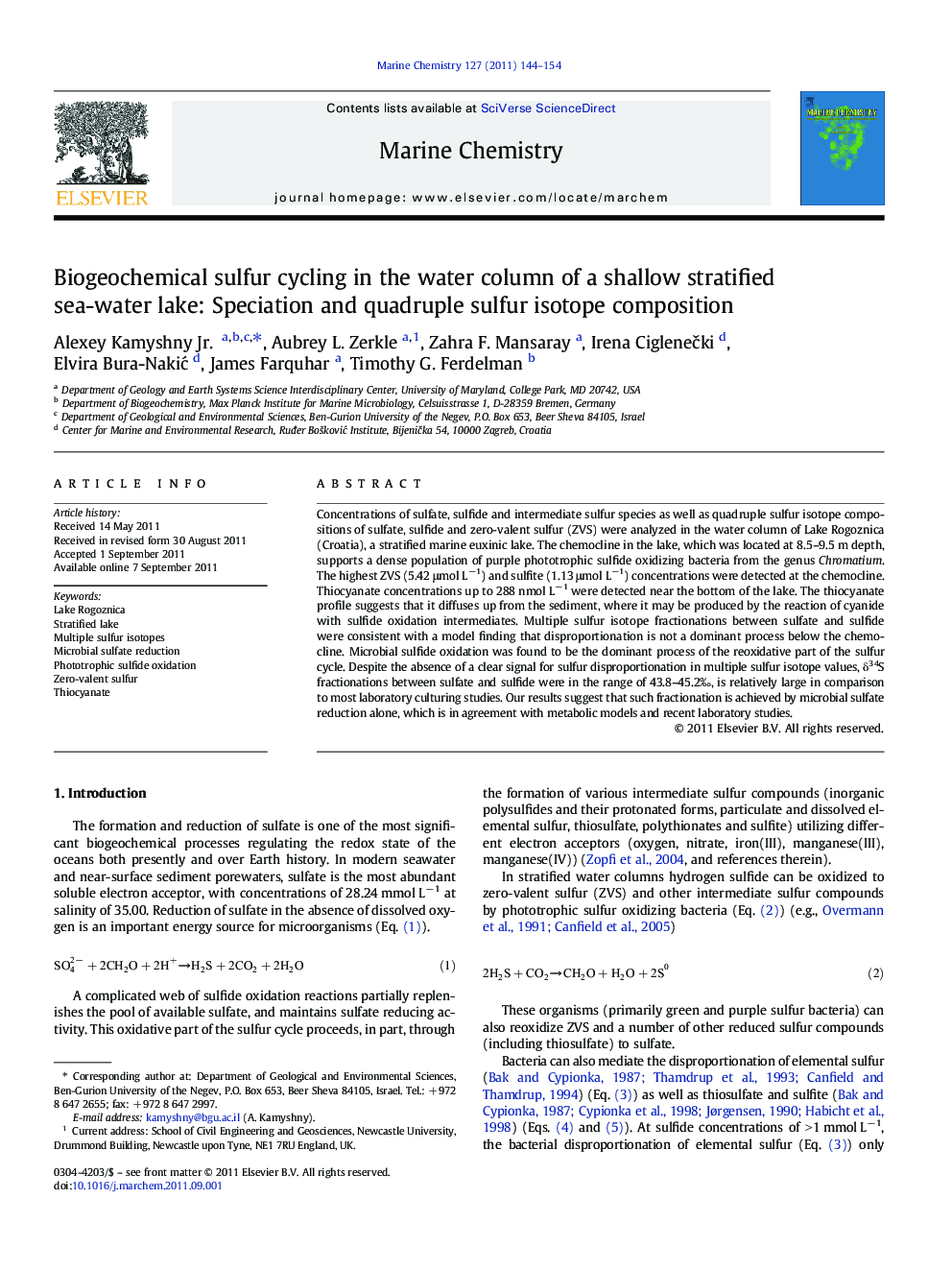| Article ID | Journal | Published Year | Pages | File Type |
|---|---|---|---|---|
| 1261489 | Marine Chemistry | 2011 | 11 Pages |
Concentrations of sulfate, sulfide and intermediate sulfur species as well as quadruple sulfur isotope compositions of sulfate, sulfide and zero-valent sulfur (ZVS) were analyzed in the water column of Lake Rogoznica (Croatia), a stratified marine euxinic lake. The chemocline in the lake, which was located at 8.5–9.5 m depth, supports a dense population of purple phototrophic sulfide oxidizing bacteria from the genus Chromatium. The highest ZVS (5.42 μmol L−1) and sulfite (1.13 μmol L−1) concentrations were detected at the chemocline. Thiocyanate concentrations up to 288 nmol L−1 were detected near the bottom of the lake. The thiocyanate profile suggests that it diffuses up from the sediment, where it may be produced by the reaction of cyanide with sulfide oxidation intermediates. Multiple sulfur isotope fractionations between sulfate and sulfide were consistent with a model finding that disproportionation is not a dominant process below the chemocline. Microbial sulfide oxidation was found to be the dominant process of the reoxidative part of the sulfur cycle. Despite the absence of a clear signal for sulfur disproportionation in multiple sulfur isotope values, δ34S fractionations between sulfate and sulfide were in the range of 43.8–45.2‰, is relatively large in comparison to most laboratory culturing studies. Our results suggest that such fractionation is achieved by microbial sulfate reduction alone, which is in agreement with metabolic models and recent laboratory studies.
► We studied sulfur cycle in water column of intensely eutrophicated seawater lake. ► The chemocline of the lake hosts a population of purple phototrophic sulfur bacteria. ► Sub-micromolar concentrations of thiocyanate were detected in the hypolimnion. ► Sulfur isotope composition data shows no sign of microbial sulfur disproportionation. ► H2S–SO42− isotope fractionation is relatively high for microbial sulfate reduction.
